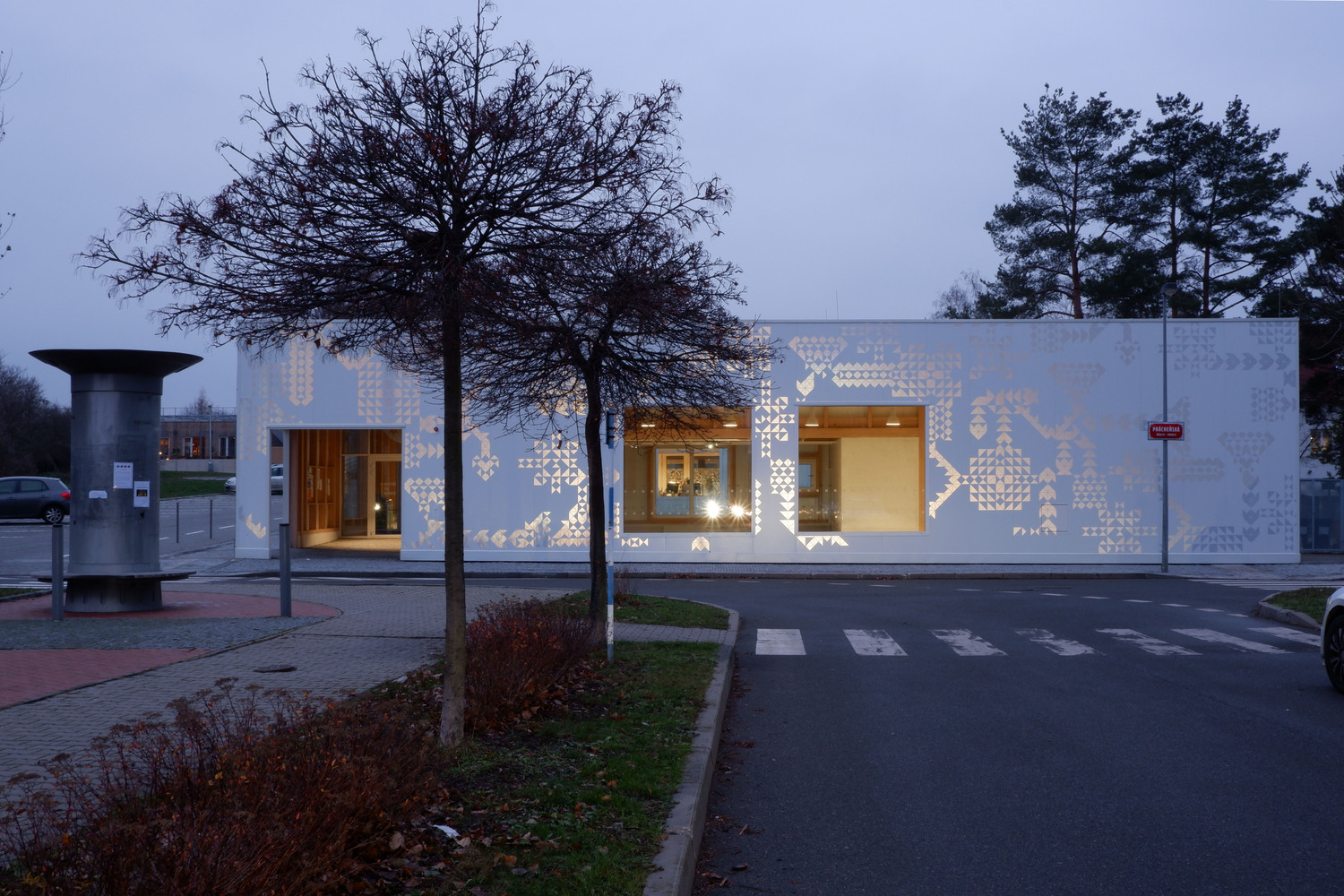La Jota Cultural Center Gbang
2012-04-09 01:00
架构师提供的文本描述。这项工作包括为三种类型的活动创造文化空间:14岁以下儿童休闲中心、文化活动中心和多用途空间。
Text description provided by the architects. The task involved the creation of a cultural space for three types of activities: The leisure center for children up to 14 years, the center for cultural activities, and the multipurpose space.
文化中心所在的城市空间是米格尔·麻生太郎广场的一小块土地,根据城市的城市规划,只允许在一楼施工,高度可达楼板水平,不超过周围建筑物底层的高度。
The urban space where the cultural center was to be located was a small lot in Plaza Miguel Aso, which according to the urban plan of the city, only allowed construction on the ground floor, with height up to the roof slab level, not exceeding the height of the ground floors of the surrounding buildings.
为了完成所需的程序,前面的情况迫使我们考虑建造一个地下室层,以使建筑物的面积翻一番,当然也是如此,因为半地下室的执行涉及到减少地面上的空间。
In order to complete the required program, the preceding circumstances forced us to consider the construction of a basement level to double the area of the building, and necessarily so, since the execution of a semi-basement involved reducing the headroom above ground.
儿童活动应在底层进行,但结构金属边长为16m,地面以下高度限制(<4m),受消防法规的限制,阻碍了地下室多用途空间的实施。
The children’s activities should be located on the ground floor, but the structural metal edges to span 16m and the height limitations under ground level (<4m), due to the fire protection regulations, prevented the execution of the multipurpose space on the basement level.
在这种情况下,儿童和文化用途在地下室的位置似乎是适当的。地面的地板是为共同的需要和多用途空间的位置而预留的。布局力求最大限度地利用可用区域。
In this vein, the location of children and cultural uses on the basement level seems appropriate. The floor on the ground level is reserved for the common needs and the location of the multipurpose space. The layout seeks maximum use of the available area.
从这个角度来看,考虑到地下室的项目需要光,或者我应该说,建筑,痴迷的是用不存在的光填充空间,但我们觉得需要成为它最突出的特征。这座建筑被感觉到是一个捕捉光线的物体,作为一个城市元素融入了广场。其他建筑物的高度主宰着我们的目标,它的屋顶规划变成了另一个立面,一个在城市环境中的空间。
Seen this way, and considering that the program on the basement level demands light, or should I say, architecture, the obsession was to fill the space with the light that didn’t exist but that we felt needed to be its most prominent character. The building is sensed as an object that captures light, integrated as an urban element into the plaza. The height of the other buildings dominates our object and its roof plan becomes another facade, a space within the urban environment.
光线是通过三种机制实现的:第一,使用位于东北面两端的两个玻璃楼梯井,充当垂直核心和服务空间的位置。第二,向东南和西南方向设计一个带有外部玻璃和内部可操作木工的双层立面。这些形成了一个L形,覆盖了整个多用途房间的长度和宽度,以便将位于同一方向的地下室墙壁浸透在光线中。第三,东南方立面上的一个开放庭院的位置,穿过整段建筑。地下室的规划,即文化活动的房间,休闲中心的空间,分配和连接的区域,以及通往这一层的通道,都是围绕着这个开口布置的。
The light is achieved by three mechanisms: First, the use of two glass stairwells situated at the two ends of the northeast facade, that act as vertical cores and the location of service spaces. Second, the design of a double facade with exterior glass and interior operable carpentry towards the southeast and southwest. These form an L shape that goes over the entire length and width of the multipurpose room, in order to drench in light the basement walls located towards the same orientation. Third, the location of an opening – courtyard on the southeast facade that traverses the entire section of the building. The program on the basement level, that is, the rooms for cultural activities, the spaces for the leisure center, the distribution and connection areas and the access to the level are laid out around this opening.
在目前的情况下,我们的对象被定位为纯体积的玻璃,在我们需要捕捉整个区域的光线的地方,以及在小开口的作用区域中的镀锌钢,寻找适合居住的空间。
In the present context, our object is positioned as a pure volume of glass, in the places where we need to capture light in the entire section, and galvanized steel in the areas in which the action of small openings, seek habitable spaces.
我们想在城市的空隙里安装一个天窗,一种建筑的感应器。
We wanted to install a skylight in the urban void, a sensor of architecture.
 举报
举报
别默默的看了,快登录帮我评论一下吧!:)
注册
登录
更多评论
相关文章
-

描边风设计中,最容易犯的8种问题分析
2018年走过了四分之一,LOGO设计趋势也清晰了LOGO设计
-

描边风设计中,最容易犯的8种问题分析
2018年走过了四分之一,LOGO设计趋势也清晰了LOGO设计
-

描边风设计中,最容易犯的8种问题分析
2018年走过了四分之一,LOGO设计趋势也清晰了LOGO设计








.jpg)

























































.jpg)

.jpg)

.jpg)

.jpg)



.jpg)

.jpg)

.jpg)

.jpg)

.jpg)

.jpg)

























